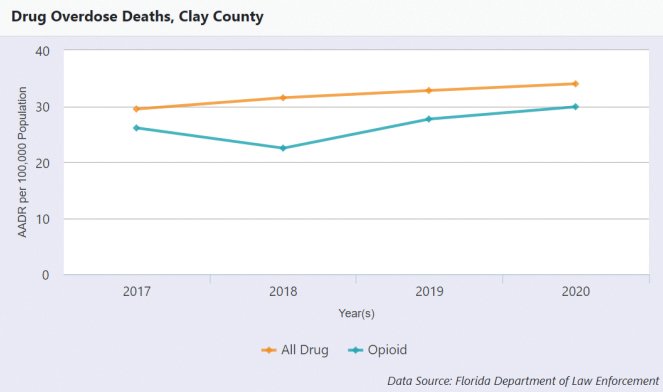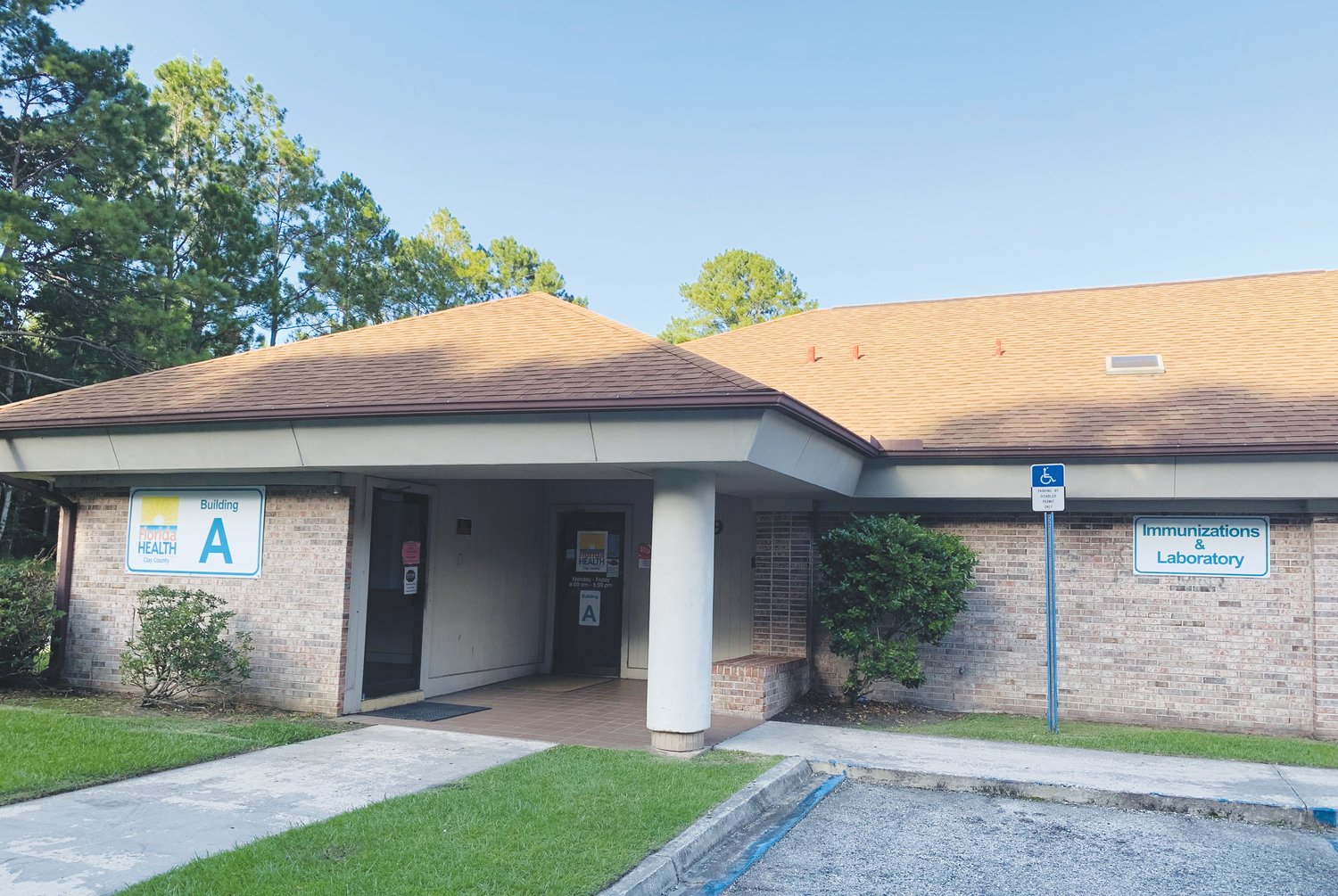Health department, Fire Rescue presents stark opioid data
GREEN COVE SPRINGS – Multiple agencies presented the Board of County Commissioners at Tuesday’s meeting with an abundance of data related to the opioid epidemic, presenting the reality of the …
This item is available in full to subscribers.
Attention subscribers
To continue reading, you will need to either log in to your subscriber account, below, or purchase a new subscription.
Please log in to continueDon't have an ID?Print subscribersIf you're a print subscriber, but do not yet have an online account, click here to create one. Non-subscribersClick here to see your options for subscribing. Single day passYou also have the option of purchasing 24 hours of access, for $1.00. Click here to purchase a single day pass. |
Health department, Fire Rescue presents stark opioid data
GREEN COVE SPRINGS – Multiple agencies presented the Board of County Commissioners at Tuesday’s meeting with an abundance of data related to the opioid epidemic, presenting the reality of the substance's impact on the county.
Commissioners heard from the Department of Health in Clay County Executive Director Heather Huffman and Northeast Florida Regional Council’s Tyler Nolen.
Huffman said the county had more opioid-related deaths, adjusted by age, than the state average. The total number of opioid deaths is slightly fewer than the total drug deaths in the county overall.
According to a 2018 National Institute on Drug Abuse study, 75% of people who began abusing opioids in the 2000s reported their first opioid was acquired by prescription. Opioid prescriptions in Clay County have dipped slightly since 2018, Huffman said.
Huffman noted naloxone, also called Narcan, can stop a fatality but it won’t stop addiction. Because naloxone can be self-administered and agencies may not be called, Huffman said the data should be taken with a grain of salt. The past two years have seen 500 uses of naloxone each after a huge spike from 2018 to 2019.
“It’s really important to talk about naloxone administration, we’ve been talking about that for a number of years now,” Huffman said.
Addiction can affect the womb. Neonatal Abstinence Syndrome is when babies are born with addiction and they usually require three longer in the hospital than a child born without it. In Clay County, there were 38 cases in 2019, 33 cases in 2018, 43 cases in 2017 and 36 cases in 2016.
Huffman said mothers addicted to opioids are given less dangerous drugs like methadone because fully stopping could harm the child.
“This is an area I think we could really make a difference,” Huffman said.
With Clay County Fire Rescue data, she showed that the agency has administered naloxone 255 times this year as of Tuesday. The three highest years for administering naloxone for CCFR were 2017 with 738 uses, 2020 with 726 uses and 2021, which saw the agency administer naloxone 658 times. There have been 5,165 administrations of naloxone since 2013, according to the agency.
The 32073 and 32068 area codes, roughly encompassing Orange Park and Middleburg, respectively, accounted for about 59% of opioid-related cases. Huffman said CCFR's overdose calls from 2021 to 2022 have dipped from 18 weekly calls to 16 calls on average.
“We are seeing a little downward trend on overdose calls,” Huffman said.
Battalion Chief Glenn East, also the CCFR Community Paramedicine Coordinator, said the potency of the drug determines how much naloxone is used. He said every firetruck has naloxone and Clay County Sheriff's Office deputies do the same.
“Our primary goal is not to string on their addiction or anything like that,” East said. “Our primary goal is to keep them alive so that they will ask for help.”
The last item pertaining to opioid use was the county’s SWOT analysis, which stands for Strengths, Weaknesses, Opportunities and Threats. Each of those four categories were applied to prevention, treatment and recovery support.
For all three topics, Nolen said the analysis from community members showed that the programs and outreach were strong. But there was room to improve with work in schools and the stigma of drug addiction and the deadliness of fentanyl are serious obstacles.
“We’re pretty much seeing fentanyl across the board right now,” Nolen said.
With treatment, Nolen said adding outpatient and treatment facilities to the county are opportunities, though community members asked for better communication between groups and agencies. Employment and housing are concerns in the recovery support category.
Nolen called for stronger “warm handoffs,” where a person suffering from drug addiction is connected when leaving one area of recovery for another, like a treatment facility to short-term housing.
“We have a much better retention rate and rate of success when that person is being handed off person-to-person,” Nolen said.
If you or someone you know is suffering from opioid addiction or wants to obtain naloxone, call the paramedicine program at (904) 284-7703 or email community.paramedicine@claycountygov.com.












